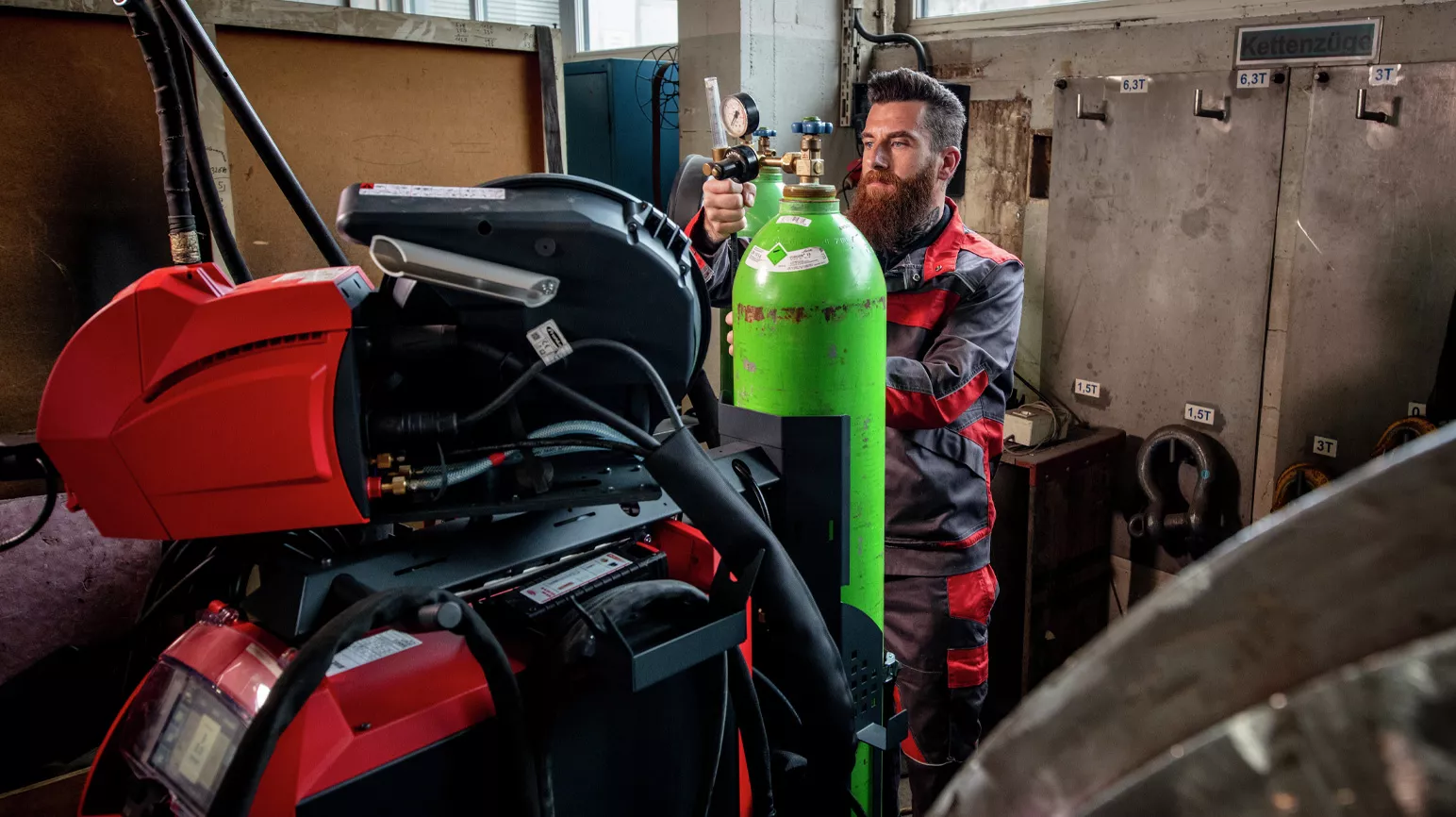Gas consumption down 40 percent thanks to intelligent control

Whether argon, helium, or mixed gases, shielding gas is essential for a stable arc and perfect welding results. Too little gas does not provide sufficient protection, allowing ambient air to penetrate to the welding point. The consequences are oxidation and porosity of the weld seams, increased spatter, and an unstable arc. Too much shielding gas is a waste of resources and also leads to problems. Excessive gas flow causes turbulence, which impairs the gas shield and also leads to air admixtures. With the negative effects here being similar to those of an insufficient gas feed, just how do you reconcile the demands of quality, cost, and resource efficiency?
Reducing gas costs = saving resources
A controlled gas setting for the respective welding process, material, or welding position ensures good weld quality and reduces costs. “Our intelligent gas controller not only ensures that the arc and the weld pool are perfectly protected, but it also makes it possible to significantly reduce gas consumption in two ways,” explains Philipp Schlor, Strategic Product Manager at Fronius International. “Firstly, it eliminates the so-called ‘blow out’ with every single welding start. On the other hand, it allows the shielding gas quantity to be regulated according to output or precisely set in advance for each individual welding job. Our experience shows gas savings of up to 40 percent can be achieved. For some customers, this value is even significantly higher if many short seams are welded, for example. In addition, consuming fewer resources lowers the carbon footprint of the manufactured components and the company as a whole: a factor that is becoming increasingly important and increases competitiveness.”
Perfect shielding gas environment for every welding start
Every welding start—whether for tacking or for seams of any length—begins with a gas shroud being formed before the arc is ignited to protect it from the atmospheric air. However, when welding starts, the set flow rate that should be available for welding is briefly exceeded. The Fronius gas regulator smooths this ‘blow out’ and ensures that no gas is wasted.
A comparison between a conventional gas solenoid valve and an intelligent gas controller illustrates the difference. If, for example, a gas flow of 18 l/min is required, the Fronius gas controller builds this up immediately and keeps it constant. With a gas solenoid valve, on the other hand, the gas flow increases for a short time up to 55 l/min and then regulates itself back down to the set, actually required quantity. The difference in consumption is evident at every welding start—and the more frequent and shorter the seams, the greater the savings.
Optimal gas control for each welding job
Standard gas solenoid valves switch the set gas flow on and off after the gas pressure regulator. The flow rate is defined for each component with one value for every weld. In practice, this means that the gas flow rate that corresponds to the gas requirement of the weld seam that requires the highest gas flow is set for the entire component. In other words, if 15 different seams need to be welded on the same component, and one of these welds is in a constrained position, then this one job defines the minimum flow rate value for all other seams—even if the remaining 14 welds could be produced to the required quality with less gas. To counteract this waste, the high-tech Fronius TPS/i and iWave welding solutions equipped with the intelligent gas controller regulate the gas flow depending on the output or allow individual gas dosing for each job.
Calculate and benefit from immediate gas savings
All Fronius TPS/i and iWave welding solutions can also be retrofitted with an intelligent Fronius gas controller at any time. The corresponding installation option can be fitted in a few simple steps, leaving nothing between you and gas-optimized welding.
The Fronius experts will be happy to determine and demonstrate how much shielding gas could potentially be saved in your company. Find out more and make an appointment here!
